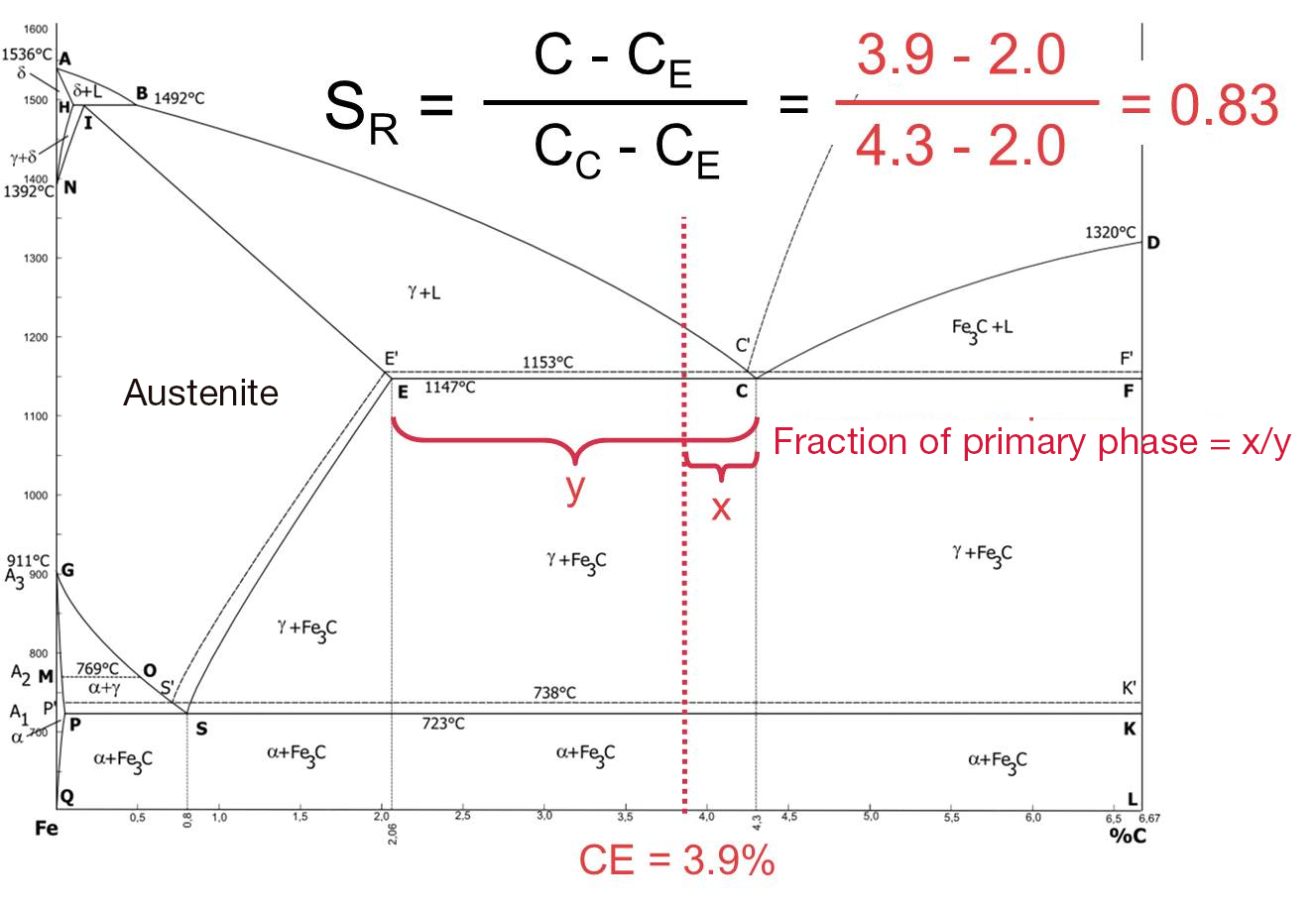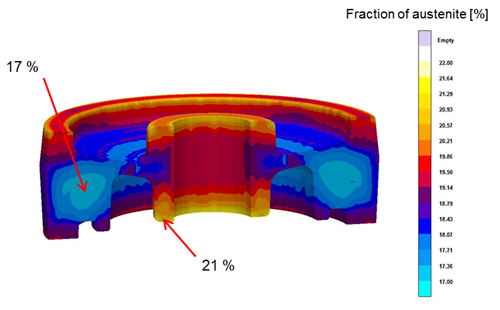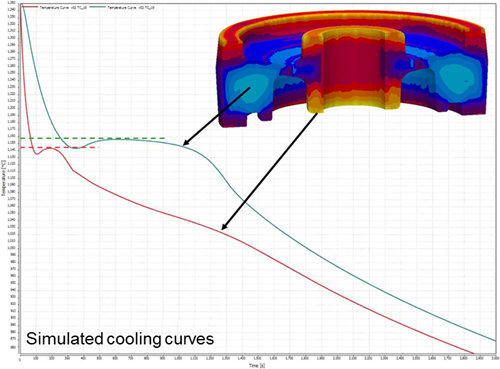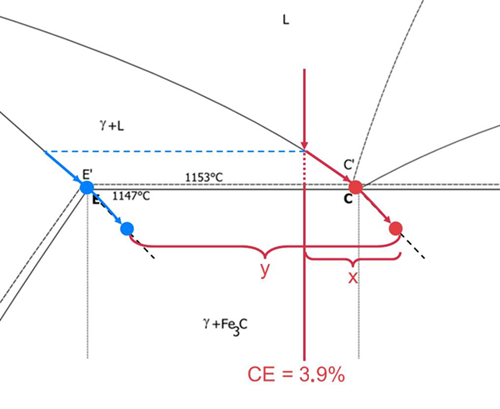
Influence of Local Cooling Rates on Microstructure and Properties of Cast Iron Alloys
The microstructure and, thus, the mechanical properties of cast iron alloys are essentially dependent on
- the chemical composition
- the number of nuclei
- the local cooling rates.
To make reliable predictions, simulation models need to take these three influencing parameters into account.
The fraction of eutectic phase that occurs in equilibrium for a composition during solidification can be described via the corrected degree of saturation SR according to E. Piwowarsky (fraction of eutectic solidification/total solidification) → (C-CE)/(CC-CE).
In the following example of an alloy with a carbon equivalent (CE) of 3.9 %, the eutectic fraction is 83 %, see Figure 1.
The fraction of primary phase (primary austenite) is, thus, 17 %.
However, the locally different cooling rates in the casting cause differences in the fraction of primary austenite, as shown by the simulation, Figure 2. The theoretical value of 17 % is only reached in the hot spot.
The reason for this behavior is the different onset of eutectic solidification. In faster cooling regions (thin-walled areas, surfaces), supercooling below the eutectic temperature is greater than in more slowly cooling regions (hot spot, thick-walled areas). This is also expressed in the corresponding cooling curves, Figure 3.
The delayed onset of eutectic solidification thus prolongs the precipitation time of the primary phase and, thus, of the primary austenite, which is illustrated in the phase diagram (Figure 4).
This leads to different lever ratios (x/y) on the metastably extended solidus and liquidus curves in the supercooling region, which result in a changed fraction of primary/eutectic solidification. This is automatically mapped locally in the simulation.
Have we sparked your interest? If you want to learn more about the simulation of cast iron, the influences of different production parameters and the design of casting systems and production conditions, attend the seminar Simulation of Cast Iron, which is available on request.
MAGMAacademy Contact
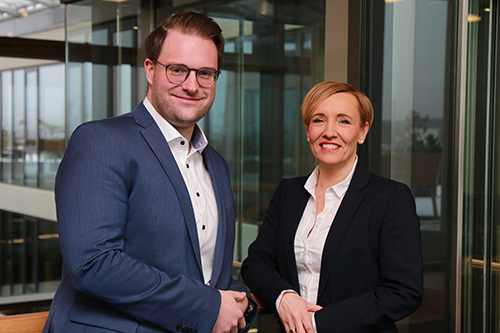
Dipl.-Ing. Tristan Kotthoff
Malaika Heidenreich
Phone: +49 241 88901-699
Mail: Show email
